Last Updated: July 9, 2024
Mount Koya (Koyasan) is a remote temple town in the Wakayama prefecture on the Honshu island. In 805 AD, the monk Kobo Daishi (Kukai) first brought Shingon Buddhism to Japan. Kobo Daishi built the first temple in 826 AD in Mount Koya. Soon after it became the centre of Shingon Buddhism and Japan’s most sacred town.
Mount Koya is one of the three sacred sites of the Kii Mountain Range and was added to the UNESCO World Heritage List in 2004. Many pilgrims and tourists have visited Mount Koya for enlightenment and spirituality over time, and most have stayed in Buddhist temple lodging facilities (shukubo). Today, there are more than 100 temples in town, and about half of them offer authentic temple accommodations.
Want to learn more about Buddhism in Japan? Then staying at Fukuchiin Temple (657 Koyasan, Koya, Ito District, Wakayama 648-0211, Japan) is a great idea! From stunning artwork and antiques, relaxing onsen facilities, to Buddhist workshops and morning prayer sessions, there’s plenty of cool things to experience!
Disclosure: I only recommend products that I’ve used in the past, and all opinions expressed in this post are my own. This post contains affiliate links. If you use one of the links throughout the page to buy something, I may earn a small commission at no extra cost to you. Thank you!
Staying at Fukuchiin Temple
A Short History of Fukuchiin Temple
Fukuchiin Temple is right in the heart of Mount Koya, and was founded by Kakuin Ajari in the 12th century. The main reason for opening the temple was to worship Aizen Myo-o, a Buddhist deity who has the power to make all wishes and desires come true.
Rooms and Amenities
Fukuchiin Temple offers 60 Japanese-style rooms on three floors for up to 250 guests. All rooms have tatami floors, futon bed(s), free Wi-Fi, air conditioning/heating, seating area, a yukata (Japanese-style bathrobe), and towel.
Some also have a TV and private Western-style toilet, and a nice garden view.

Apart from rooms, it’s possible to rent meeting rooms and conference rooms at Fukuchiin Temple as well.
Artwork, Antiques, and Onsen Facilities
As you wander around the temple hallways, take some time to admire the antiques from the Nara period (710-784 AD), calligraphy writings, and wall paintings. My favourite artwork is the colourful tiger painting! There are a few cozy sitting areas as well.




Fukuchiin Temple is proud to offer the only natural hot springs in Mount Koya. You can relax in their open air rock bath, indoor bath, family bath, or sauna. All are separated for men and women, but tattoos are not allowed. You can find more details on their onsen facilities here.
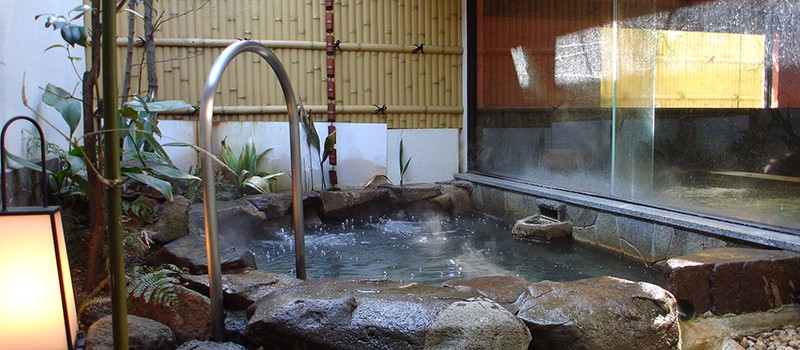
Sutra Copying Workshop and Morning Prayer Session
For an even more authentic experience, overnight guests at Fukuchiin Temple are encouraged to join several Buddhist workshops and sessions.
For example, you can participate in a Sutra Copying workshop in the evening. After cleansing their hands with incense powder, every guest kneels down in front of a table. Then a monk gives you a paper with Japanese characters on it, and you’ll copy them with a very thin ink brush.
Besides, everyone needs to write down a wish on their paper. This meditation technique started in the Heian period (794-1185 AD) and you get a Buddhist bead bracelet, too! Guests are not allowed to drink alcohol before the workshop, as this takes a lot of focus.

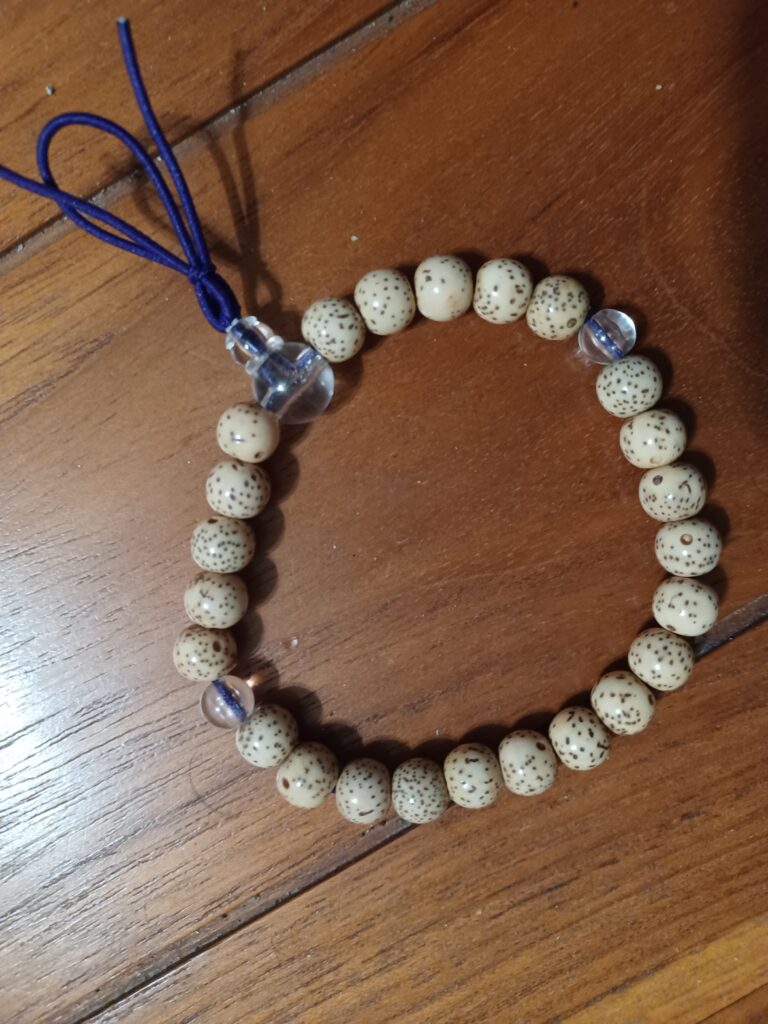
Sutra Copying Workshop (photo credit: Fukuchiin Temple) and the bead bracelet I got!
Every morning at 6 am, guests are welcome to join the Morning Prayer session with the monks who live and work at the temple. It was very moving to listen to them chanting songs and all the Buddhist treasures inside the room were super impressive!
In the end, both the monks and visitors said a prayer and bowed afterwards. What an amazing experience!

Shojin ryoki cuisine at Fukuchiin Temple
As a Buddhist monk, it’s common to eat shojin ryori (monk’s diet) vegetarian meals. So at Fukuchiin Temple, you can book this kind of breakfast and/or dinner in advance, for an extra cost.
Guests sit in several traditional Japanese-style dining rooms and wall separators are put up between groups for privacy. The kitchen uses local specialties, such as koya-dofu (frozen-dried tofu) and Kinzanji wasabi, and fresh seasonal vegetables, with miso soup, rice, and green tea.
The dishes at Fukuchiin Temple are made from scratch and change every month. Unfortunately, the kitchen is unable to accommodate food allergies or dietary needs.

Temple Garden Areas
Fukuchiin Temple has three beautiful gardens: The Rock Garden (“Lotus Garden”), Aizen Garden, and Tosen Garden and the last one has a pond as well. All of these were designed by the Japanese landscape architect Mirei Shigemori.
The gardens are famous for their powerful stonework and moss plants and guests are welcome to walk around and relax here during their stay.

Coffee Corner, Gift Shop, and Directions to Fukuchiin Temple
Only a few steps from the breakfast rooms you can drink a cup of coffee or tea in the cozy Coffee Corner room! There are some books and magazines, too. What a perfect spot to sit and relax, especially during the colder months!
Fukuchiin Temple has a small gift shop as well, which is open during limited hours of the day.
After arriving at Koyasan Station by cable car, it’s pretty easy to get to Fukuchiin Temple. Just hop on a local bus going to “Okunoin” or “Daimon”, and exit at the 4th stop, “Koya Keisatsu-mae”. The temple is on the right side, about 30 meters back from the direction of the bus.
My Opinion on Staying at Fukuchiin Temple
As you can probably tell by now, staying at Fukuchiin Temple is quite a special experience!
When you first enter the temple, you need to leave your shoes in the reception area, and put on slippers. Next, the English-speaking receptionists are happy to guide you about your stay. Please note that there’s a curfew at 9 pm, so be sure to be back at the temple by then.

Before Mount Koya, I was in Kyoto, and staying at Fukuchiin Temple was a great way to recover from the big city! It was quiet and calm, just as you’d imagine a Buddhist temple to be. So it’s perfect to relax, meditate, cleanse your body, and see what the simple life of a Buddhist monk is like!
My room was very clean and spacious, and I was grateful for the heater, lol! The Sutra Copying workshop and Morning Prayer session were perfect to learn about Buddhism in Japan and about a monk’s daily lifestyle inside the temple. The food at breakfast was delicious as well! 😛
So even though the nightly rate is quite high, I highly recommend trying this kind of accommodation at least once in a lifetime!
Fukuchiin Temple is open year-round. Staying here is very popular, so it’s best to book this accommodation weeks or even months before your trip to Japan starts.

Mount Koya Okunoin Cemetery
The next morning, I wandered around Mount Koya’s town centre for a bit. After a while, I crossed Ichinohashi Bridge over the Odogawa river, which is the entrance to Okunoin Cemetery (132 Koyasan, Koya-cho, Ito-gun, Wakayama, 648-0211, Japan).
It’s inside an ancient cedar forest grove and with more than 200,000 tombstones, is Japan’s largest cemetery.
Some important historical figures are buried here. Examples are the Tokugawa family (who ruled Japan during the Edo period) and the Toyotomi family (who ruled the country before the Edo period).
You’ll also find many Jizo statues (the Buddhist deity that protects children and travelers) along the 2 kilometer (1.24 mile) long walkway.





At the end of the pathway is Mount Koya’s biggest attraction: Okunoin Temple that is home to Kobo Daishi’s mausoleum. Thanks to his high significance in Japanese religion, this is one of Japan’s most sacred places and a popular spot for pilgrims.
Unfortunately, I didn’t have time to go all the way, but I felt so calm during my walk around Okunoin Cemetery! In my opinion, all the graves surrounded by the old cedar trees contribute to the serene and mystical (even almost magical) atmosphere of this place. It’s also perfect for some shirin-yoku (forest bathing)!
Okunoin Cemetery is open during the day and nighttime, and you can book a guided night walk at 7 pm each day (in English), that takes about 1.5 hours.
Other Things to Do in Mount Koya
Here are few more things to do in Mount Koya if you have time:
- Kongobuji is the most important temple of Shingon Buddhism in Japan. It was built in 1593 by Toyotomi Hideyoshi and you can visit its rooms that have cranes and flower blossoms on the walls. Admission to enter Kongobuji Temple is ¥ 1,000.
- Behind Kongobuji is Banryutei Rock Garden, Japan’s biggest rock garden, which has been around since 1984. It has more than 100 large granite stones.
- The Daimon Gate is the gateway to Mount Koya. It’s a multistoried tower gate at 25.1 meters (82.3 ft) high and was rebuilt in 1705, after the original gate was destroyed by fire and lightning.

Mount Koya also has some great hiking trails for all abilities. For example, the Kohechi Trail from Mount Koya to the Kumano Hongu Taisha Grand Shrine is a part of the famous Kumano Kodo Pilgrimage route. It’s a rugged and steep hike though and is about 70 km (43 miles) long!
If you don’t feel super adventurous, Mount Koya also has some nice souvenir shops in the downtown area! 😀
Where to Eat & Drink in Mount Koya
If you’re not eating dinner at Fukuchiin Temple, Hanabishi Restaurant (769 Koyasan, Ito Gun Koya Cho, Wakayama, 648-0211, Japan) is a great choice! They offer Kaiseki cuisine (traditional Japanese multicourse dinner), sushi and bento box dishes, and shojin ryori (vegetarian).
I had the Sanko Zen Buddhist Vegetarian Meal, that consists of fried eggplant covered in bean paste, sesame tofu, cooked veggies, enokidake mushrooms, and more! While the price was a bit high, it was more than worth it, especially the eggplant was super tasty!
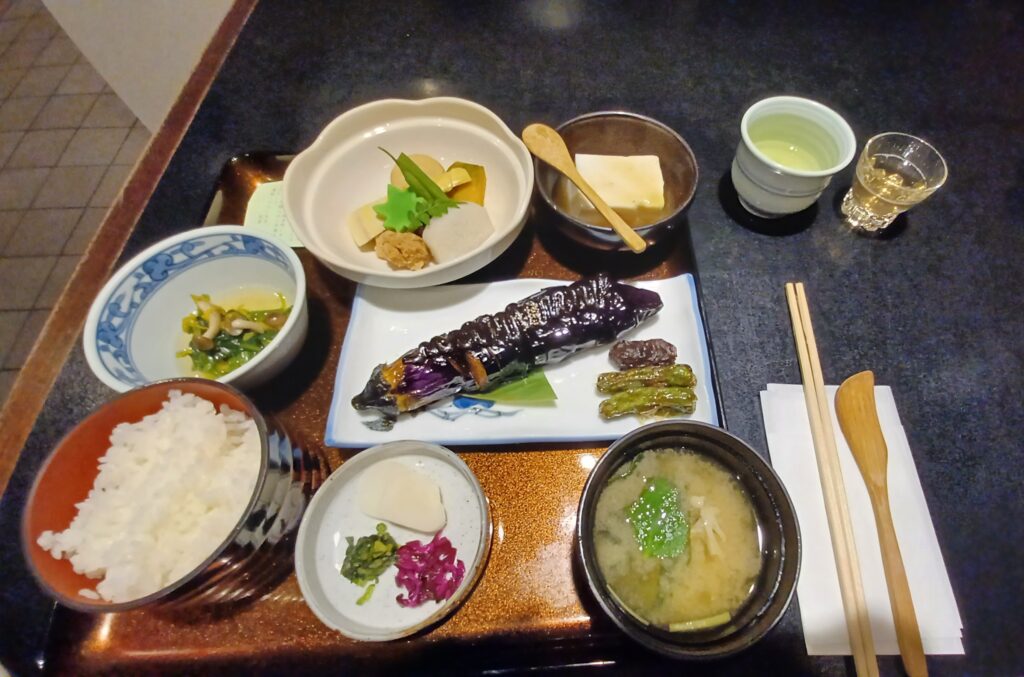
Please note that many restaurants in Mount Koya close by 5 or 6 pm. Besides, I was surprised to not see any konbini (convenience stores), but you can find some vending machines around town. 😉
How to Get To and Around Mount Koya on Public Transit
The closest big city is Osaka, which is about 2 hours north of Mount Koya. The most direct train option is to hop on the Nankai Limited Express in Shin-Imamiya Station to Gokurakubashi Station. Then transfer to the Nankai Koyasan Cable Car train to Koyasan Station, and local buses are ready to take you around town from there!
If you’re in Koyasan for two consecutive days, it makes sense to buy the Koyasan World Heritage Ticket. It includes roundtrip transportation from Namba or Shin-Imamiya Station to Mount Koya, unlimited local bus travel, and discounted admission to certain tourist attractions. The rate starts at ¥ 3,140 per person.
The closest airport to Mount Koya is Osaka Kansai International Airport.
If you’d like to read more about Japan, check out these posts:
How to Spend Four Days in Tokyo, Japan
Is Nagoya Castle Worth Visiting? (Guest Post for The Directionally Challenged Traveler)
How to Spend 48 Hours in Kyoto, Japan
- 9 REASONS TO VISIT LEIPZIG, GERMANY FOR A DAY - April 7, 2025
- ONE DAY IN ANCONA, ITALY: THE 6 BEST THINGS TO DO IN 2025 - February 28, 2025
- THE ULTIMATE SOUTH COAST OF ICELANDITINERARY: THE PERFECT DAY TRIP FROM REYKJAVIK - February 1, 2025


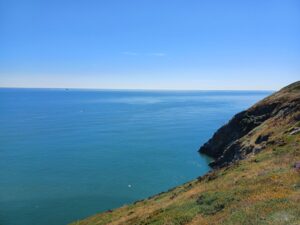


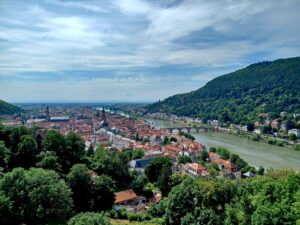
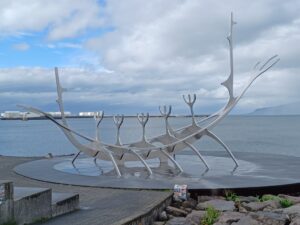
What a special experience this is. You certainly immersed yourself in the local culture!
Thanks Sharyn! Yes, I’m very grateful that I stayed at Fukuchiin temple! It’s an experience you won’t forget.
Aaah this brings back such happy memories! I have stayed in Koya-san a few times (both in the temples, and in the guesthouse, although I always like the temples best) It is such an incredible area isn’t it.
I never did the Sutra Copying Workshop – that is really cool!
Hi Josy! Yes, staying at a temple is such a special and authentic Japanese experience! Which ones did you stay at? And I can’t wait to get back to Mount Koya and explore more of its area.
Hi, we are going on this temple stay after reading your wonderful review and we were wondering if we had to register or make reservations for the activities, separate to the booking for the stay?
Hi Vanessa! Aww thank you 🙂 No, I didn’t register in advance for the sutra copying and the morning prayer session. I just mentioned that I’d like to join them upon check in at the reception and it was no problem at all. Enjoy your stay at Fukuchiin Temple 🙂